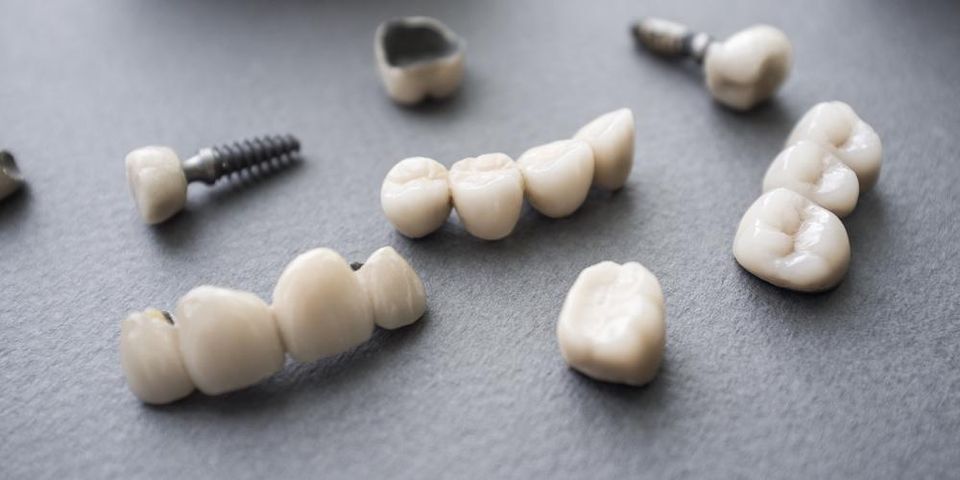Are Dental Implants or Bridges Right for Me?

When you have missing teeth, the look of your smile isn’t all you have to worry about. Eventually, this open space can lead to misaligned teeth, jaw bone deterioration, and an increased risk of gum infection. Fortunately, you can stay a step ahead of these problems with the help of dental implants or bridges. As dentists providing comprehensive restorative services in Hamilton, OH, Charles P. Debbane, DDS and Laura M. Arnold, DDS help explain the differences between these two popular treatments.
Dental Implants Vs. Bridges: Which Treatment Is Best for You?
How Do Dental Implants Work?
Dental implants are a two-part prosthetic system designed to completely replace the entire root-and-tooth system. The procedure is completed over a few stages. First, your dentist will gently insert a titanium post through the gums where the original tooth used to be. Over the next several weeks, the post will fuse with the jaw bone for a secure placement. After that, a custom dental crown is affixed to the post to provide you with an artificial tooth that will look and function just like a real one.
How Do Dental Bridges Work?
 While bridges are also designed to fill in open spaces left behind by missing teeth, they do not require devices to be implanted into the jaw. They come in many different configurations, but typically feature one or more artificial teeth, which is referred to as a “pontic.” The pontic is then surrounded by porcelain crowns—known as abutments—that fix onto existing teeth to secure the bridge.
While bridges are also designed to fill in open spaces left behind by missing teeth, they do not require devices to be implanted into the jaw. They come in many different configurations, but typically feature one or more artificial teeth, which is referred to as a “pontic.” The pontic is then surrounded by porcelain crowns—known as abutments—that fix onto existing teeth to secure the bridge.
Which Option Is Better?
Both dental implants and bridges can provide long-lasting, comfortable replacements for missing teeth. While they typically involve higher upfront costs, implants provide more value over time—particularly because they can last a lifetime with proper care. Implants are also ideal if you’re concerned about protecting your jaw against bone loss.
However, if you’re looking for a faster, less invasive option, bridges may be the better choice for you. Bridges are also ideal for situations when multiple teeth need to be replaced at once. If you’re missing several teeth, your dentist may also be able to design a bridge that is anchored in place by dental implants—not porcelain crowns. This approach provides the optimal security of implants, but the speed and adjustability afforded by bridges.
Although each option provides unique pros and cons, the only way to know which treatment is best for you is to talk with a trusted dentist—such as Charles P. Debbane, DDS and Laura M. Arnold, DDS. Well-versed in bridge and implant treatment options, these experienced professionals can determine which approach will best support your oral health over time and deliver optimal comfort for years to come. As trusted cosmetic dentists, this team provides many other state-of-the-art smile makeover services, including dental veneers and teeth whitening. To learn more about these capabilities, visit this practice online or call (330) 452-2255 to schedule a stress-free appointment with a friendly specialist.
About the Business
(21 reviews)
Have a question? Ask the experts!
Send your question

